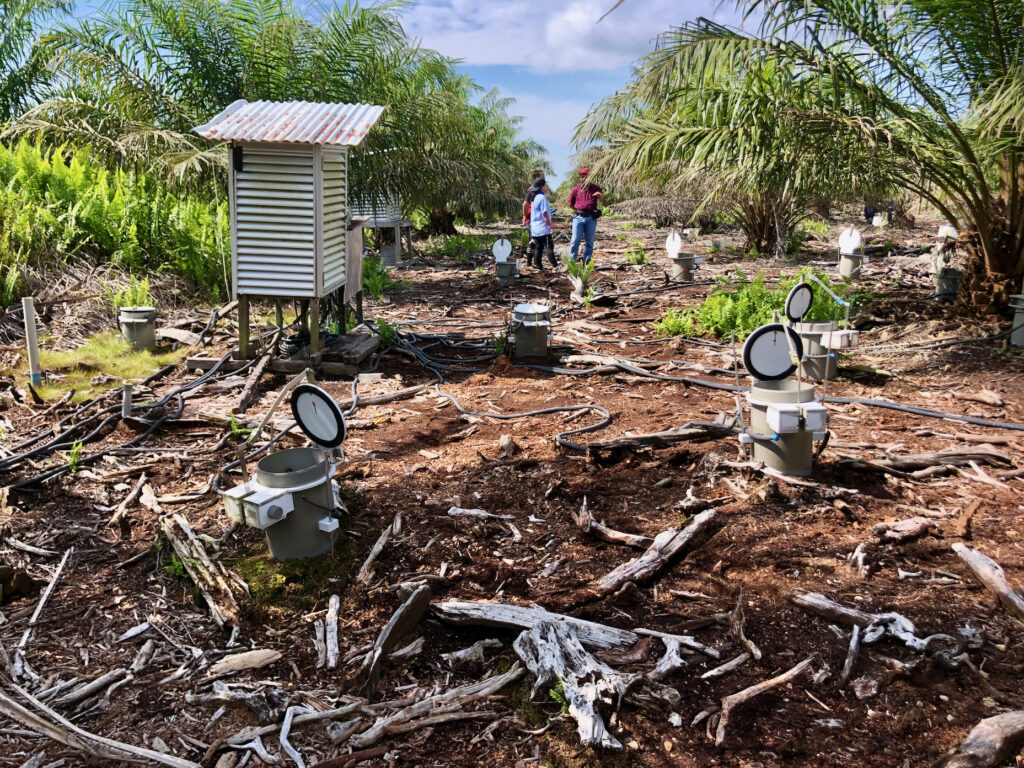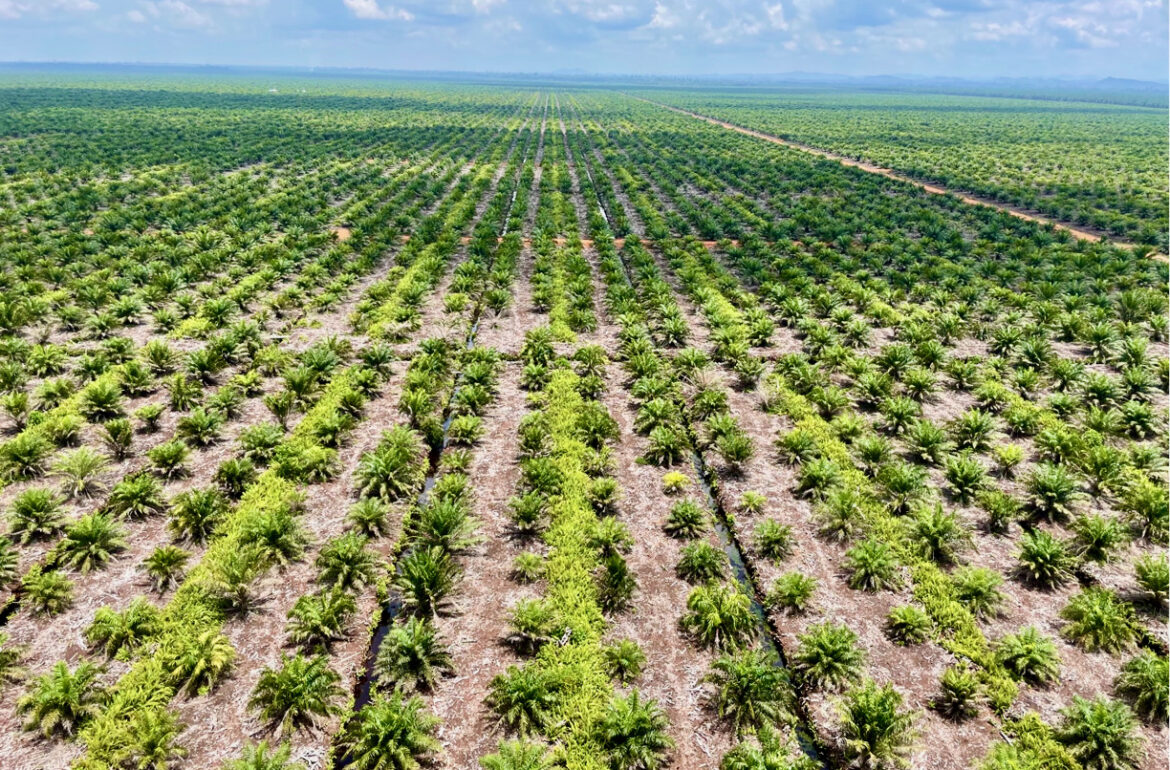Researchers from the University of Tartu are investigating the number of greenhouse gases emitted from the cultivated wetlands of Borneo Island and the Amazon lowlands and are seeking solutions to restore the peatlands.
The driving force behind continued climate change is no longer fossil fuels but changes in land use, the circulation of matter and the energy balance of natural ecosystems caused by climate change. This is confirmed by the fact that the amount of the most significant anthropogenic greenhouse gas – carbon dioxide (CO2) – in the Earth’s atmosphere is constantly increasing despite the restrictions placed on burning fossil fuels.
Notably, the amounts of CO2 caused by burning fossil fuels are over ten times smaller than the CO2 flows between terrestrial ecosystems and the atmosphere. In most models of the total CO2 balance, the emission from ecosystems and sequestration within them are assumed to be equal, which is a false assumption. There is ample evidence that emissions can surpass sequestration. Thus, a bias towards emissions in the greenhouse gas balance of terrestrial ecosystems can change the total balance much more than the restrictions on the use of fossil fuels.
Limiting the use of fossil fuels is still necessary to improve the environment. However, to prevent greenhouse gas emissions, we must focus on natural ecosystems and ecosystems affected by human activity. In recent years, evidence has emerged that in addition to CO2, natural ecosystems are increasingly emitting other dangerous greenhouse gases – methane (CH4) and nitrous oxide (N2O) – which are 28 and 273 times more potent greenhouse effect generators than CO2, respectively. On the one hand, this indicates that most terrestrial ecosystems are already affected by climate change and have become sources of greenhouse gases. On the other hand, this implies the growing importance of human-impacted natural areas throughout global warming.
Vast amounts of carbon have been stored in peatlands
The best example of such anthropogenic ecosystems is peat peatlands and other wetland ecosystems, which could also be considered the most endangered. Peatlands cover only about 3-4% of terrestrial land, but their peat stores a third of the soil’s organic carbon (about 3 trillion tonnes) and nearly 10% nitrogen. Natural mires (all bogs and fens) are generally weak CO2 sequesters since peat takes a long time to develop, and carbon accumulation takes thousands of years. Natural mires sequester nitrous oxide, but due to anaerobic conditions, methane is released from them. Drained peat decomposes quickly and releases large amounts of CO2 and N2O but reduces the emission of CH4 to some extent.
According to a rough estimate, about 10% of the earth’s peatlands are disappearing due to drainage or peat extraction. However, this does not account for the impact of disturbances due to changes in the water regime, drainage or increasing droughts, which raises the proportion of disturbed peatlands to nearly 50%. According to comprehensive studies, 46% of Europe’s peatlands are disturbed and destined to disappear without restoration measures.
Recently published studies by scientists from the Institute of Ecology and Earth Sciences at the University of Tartu on the microorganisms involved in the nitrogen cycle of peatlands in the world reveal that almost all studied peatlands, including natural ones, have suffered from dryness for a longer or shorter period. This is confirmed by the increasing proportion of oxygen-loving microbes in the nitrogen cycling processes. In dry peatlands, the water level drops and the upper layer of peat becomes rich in oxygen. This promotes the decomposition of organic matter as well as the more intensive emission of nitrous oxide. The drying of most natural mires is probably due to more intense and frequent droughts.
The rest of the world’s wetlands are threatened for the same reasons as the peatlands.
It takes decades to restore raised bogs and fens
Solely protective measures are not enough to stop the further decline of peatlands; their restoration is also becoming increasingly important. This work has been extensively undertaken in Europe, North America and Southeast Asia. Several basic and applied research projects aimed at the sustainable restoration of peatlands have recently started as part of Horizon Europe – the EU’s framework programme for research and innovation. However, two points must be mentioned here.
First, restoration is a very time-consuming process. Its duration also depends on the set goal. If we want to restore former raised bogs and fens, it may take decades before the peat-forming vegetation – mainly peat moss and sedges in northern countries – achieves stable growth and begins to develop peat.
A faster method is to grow wetland plants such as reed canary grass, cranberries and peat moss, which at least stops the peat from decomposing and allows new peat to develop slowly.

establishing an oil palm plantation: the soil is deforested, poisoned and fertilized.
Another possible way is to restore wetland forests. However, it must be emphasised that while forestry restoration of peatlands (one of the prerequisites for which is the continuation of drainage) does ensure the successful growth of trees, economic revenues and even the addition of carbon into the soil through the ground cover and roots of trees, the development of peat in such conditions virtually ceases. At the same time, CO2 is still released from the duff rich in organic matter and leaching of organic carbon dissolved in water is also added. In restored wetland forests where the water level is kept high, long-term peat preservation and regeneration is possible, but the economic returns of the forest are almost non-existent.
In short, solely restoring the water level will help restore the peatlands of temperate and higher latitudes – both in the northern hemisphere, where most of the peatlands are located and in the southern hemisphere, where a small part of the world’s mires are located.
Mires may disappear from temperate climate zones
In recent months, a vocal debate between forest managers and restorers of peatlands in the EU has erupted over traditional afforestation and the restoration of peatlands with higher water levels. This has also stalled the EU’s legislative decisions on ecosystem restorations.
One of the arguments of the forest management representatives is the dataset accumulated in recent years based on the short-term balance of CO2 flows between the atmosphere and terrestrial ecosystems, which are measured with extremely precise methods. These prove that forests established on drained and restored peatlands also sequester carbon in the short term. However, the data covers too short a period to judge the long-term carbon sequestration in the soil (peat in the case of peatlands).
As the drainage continues, after a long time, the peat mineralises and, in its place, remains an initially rich mineral soil where the forest can grow well and sequester carbon for a long time. However, the soil on which the forest grows is no longer peat but mineral soil with a much lower carbon content. With each new cutting cycle, peat mineralisation will likely intensify.
That is how large mires in Western and Central Europe and North America have become wooded areas over time. If this trend continues, the mires may disappear entirely from the temperate climate. In the tropics, the rewetting of fields and plantations established in place of former wetland forests could be more successful since the peat there is formed from trees, and the process of peat formation is also faster.
Scientists study peatland restoration in rainforests
The sustainable restoration of wetlands is essential to regulate the balance of carbon and nitrogen and preserve biodiversity. Therefore, further research on them is crucial both in the rest of the world and here in Estonia.
In recent years, researchers at the Department of Geography at the University of Tartu have been interested in the peatlands of the rest of the world—particularly tropical swamp forests that are the primary sources of greenhouse gases (hotspots) but have not been widely studied so far. As part of the EU’s “Twinning” programme, the project “LiWeFor” (led by Ülo Mander) has been started. In addition to researchers from the University of Tartu, the University of Helsinki and the Karlsruhe Institute of Technology, the project involves scientists from the Research Institute of the Peruvian Amazon, the National University of the Peruvian Amazon and the Sarawak Tropical Peat Research Institute in Malaysia. The research investigates the balance of greenhouse gases and the potential restoration of disturbed peatlands in the Amazon lowlands and on the island of Borneo. The project’s long-term aim is to establish a global network of living labs for wetland forest research where the local community is included, in addition to scientists.
It is challenging to limit the emission of greenhouse gases in peatlands, as is the case in most human-influenced terrestrial ecosystems. Changing the water regime to restore mires is possible at high costs, but mitigating the impact of increasing droughts is probably beyond our capabilities.
It is more realistic to implement an adaption strategy that would at least help balance the number of greenhouse gases in terrestrial ecosystems and slow down the loss of CO2, even if this means accepting the mineralisation and long-term loss of peat—particularly in areas where maintaining the water level is too complicated and expensive, and the afforestation of peatlands is the most optimal solution.
The possibilities of restoring peatlands in the tropics have barely been studied, but it could theoretically be successful in some cases. An alternative to the forest would be to use the peatlands as grassland.
Finally, a small speculative ray of hope: the paludification of vast tundra areas associated with climate change could accelerate; on a global scale, these could replace or supplement the disappearing peatlands. Yet one factor we cannot forget is the time it takes for mires to recover. For this purpose, a short-term (a few decades to a century) perspective must be supplemented by a longer-term strategy.
Written by Ülo Mander. This article was initially published in Universitas Tartuensis magazine. The translation and editing of the article were funded by the European Regional Development Fund through Estonian Research Council.
 Back
Back



